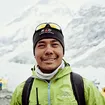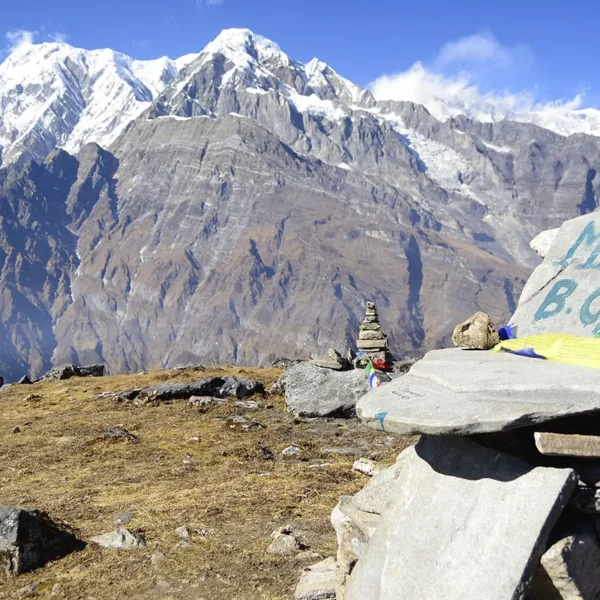Is this trek suitable to the beginners?
Yes, the Mardi Himal Trek is considered beginner-friendly compared to many Himalayan routes. Regular and well marked, the trail does not follow technical landscape. Each day is usually a 4-6 hours continuous hike on the moderate land. Trekkers must be in good general health, and must be capable of walking several hours per day. You need prior hiking experience although it is not mandatory. It aids to prepare some walks or hikes a few months before the trek. The schedule will have acclimatization stops to acclimatize. This trek is a great way to get a first-hand experience of trekking in the Annapurna region, and yet there are plenty of breathtaking mountain views.
Private vs Group trek
You are also able to book Mardi Himal as either an individual or a group trip. A personal trip is planned by your group (family or friends) and you receive a private approach to each of the members of the group. The time and the facilities could be flexible according to your wish. Private travel is more expensive at the individual level but it is flexible (one is able to modify the itinerary or take rest days).
Fixed date group tours bring you together with others and this reduces the cost. You will get to know individuals of diverse backgrounds around the globe and have the experience. Guides tend to guide between 4-12 people at one time. Make a decision according to your financial capabilities and even travel style. RAD Global Adventure provides these two options
Trip Extension
If you can spend some additional time in Nepal, then detour Mardi Himal with it. The trek can be followed by further exploration in Pokhara (boating on the Phewa Lake, caves, etc) or short-duration hikes such as sunrise tour at Sarangkot. A number of travellers combine Annapurna Base Camp Trek or Ghorepani Poon Hill to get more mountain views.
Cultural extensions would be to a Chitwan jungle safari (wildlife), or to nearby Lumbini (the birthplace of Buddha). On returning to Kathmandu, you will go out on a city tour or day hikes around Kathmandu Valley. Essentially you have the freedom to design any additional days with tours or treks to your interests and optimize the experiences.
Solo trek
The Mardi Himal Trek can be done solo with the right preparation, but we recommend using a guide for safety and convenience. A solo trekker in Nepal needs to have experience at mountainous trekking and feel at ease when navigating in the remote paths. All permissions and travel arrangements (travel, accommodation) are to be organized separately.
A local guide will be helpful: He/she will take the permit documents, be familiar with the route, and can speak Nepali in case of any troubles. Giving details and directions and emergencies or illness are performed by guides and porters as well. Numerous individual hikers continue to employ guides and/or porters.
When you decide to be fully independent, make sure that you have appropriate maps, registrations (TIMS/ACAP) and emergency plans. Although someone who is a good hiker on his/her own can attempt it, it does make it smoother and safer to have a guide.
Photography rules and Drone rules
Mardi Himal is a mountainous paradise and one of the notable attractions is photography so carry your camera. Personal photographs of landscape and subjects of people (with their consent) are permitted. But the drones are still limited in Nepal: a special permission (NOC) must be received in the Civil Aviation Authority, which is rather difficult and requires time.
Thus, the drones are not to be recommended to travelers unless they obtain the corresponding permits before their departure. To any camera add additional batteries and memory cards (limited charging). Tri-pods Sunrises/sunsets can be done with very light tripods. Always check with locals before taking a photo of people or religious rites and do not take a photo in temple “no photo” sign.
Cultural Festivals on the Trail
The Mardi Himal region is inhabited by Gurung and Magar communities and local people practice the main Nepal festivals. When you short hike in September or October, you can come across Dashain (The largest festival of Nepal) and Tihar (Festival of lights). During these times villages will be colorfully decorated with prayer flags and lights and there may be local celebration or dance.
Tihar festivals are a part of late November and are filled with the lamps and music of home. In February there is Losar (New Year), a Tibetian influenced festival. During trek in any local festivals, the local people will offer warm hospitality in the form of seasonal foods and/or tea. Ask your guide in case of any festivals going on; it could be a great cultural experience just to observe the same or be a part of the event.
Tips for First-Time Nepal Visitors
Take Nepalese rupees with you. ATMs and banks are in Kathmandu/Pokhara, and in the villages in the mountains there are very few or none. It is convenient to carry little notes (NPR 100s, 500s) to pay a snack or give a tip. Tipping culture is normal – when you tip a guide/porter about $5-10 dollars a day per person you will make him or her happy.
Eat simply at elevation: dahl bhat (rice and lentils) will satiate your stomach, and wona t make you sick. Never enter a temple or a home wearing shoes Do not drink tap water- drink bottled or filtered water when they are in the village, dress modestly in order to be respectful: clothes should cover shoulders and knees. Greet people with the words of the Namaste (hands clapped together). The power may vary, so carry extra battery of devices or power banks. Generally, be a flexible and docile person because the Nepalis are very friendly and so is a smile.
Typical Daily Routine on the Trek
Day-to-day routines begin early, typically a wake up call of 6-7AM and hot lemon tea. It is followed by breakfast (porridge, eggs or toast). At 7.30 -8.00 AM we started our hiking. In the mid morning we tend to have a little break or hot beverage. At about noon we rest on the trail and eat packed or lodge lunch. In early afternoon (around 2-3 PM) we get to the tea house camp of that day.
The afternoon will be a free time to rest: charge batteries (paid), stretch, take snacks. Trekkers usually drink ginger tea or hot chocolate in the late afternoon, and watch the mountains. There is dinner between 6 and 7 PM (generally dal bhat and vegetables) and lights go off at 8-9 PM because the following day starts with dawn. This is a daily repetition procedure, as there is a little variation in the distance and height on a daily basis.
Mental Preparation & Trekking Mindset
The aspect of trekking in the Himalayas is as much psychological as it is physical. Develop a patient positive attitude. Keep in mind that the idea is to have a fun trip: go slow, take time out, and admire the view. Be flexible to changing situations (such as weather or tired). When you become tired or short of breath then stop and rest but it is not necessary to walk quickly. Smile when small achievements (a sunrise on High Camp or making it to a viewpoint) are accomplished.
Appreciate the simplistic life of mountains: spending many hours conversing with other hikers, nights under clear skies, and being out in the wild. Mentally bring yourself once again to the goal on the other end and the exclusive experience you are undergoing. Most trekkers end up feeling extremely proud of themselves and in a very special touch with themselves and the mountains. Be thankful every day, and be inspired by the mountains.




